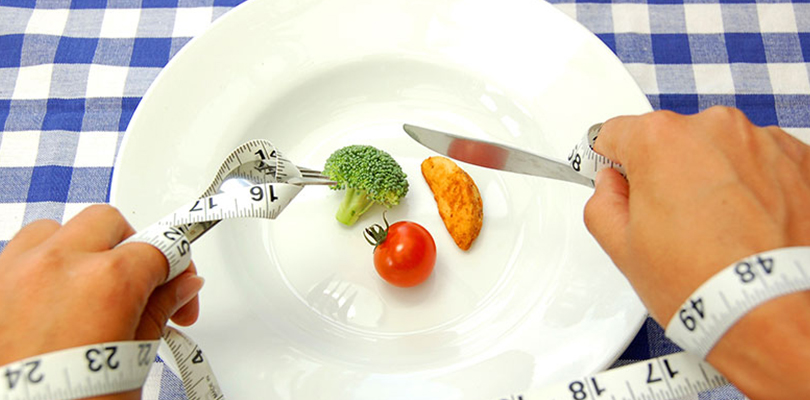BPH Treatment 101
Many older men are bothered by an enlarged prostate, also called benign prostatic hyperplasia (BPH). When a prostate is enlarged, it puts pressure on the urethra, causing a weak urine stream and interrupted sleep as you wake up numerous times to pee. BPH can also block urine flow and cause urinary tract, bladder or kidney problems.
Symptoms may include:
- Nighttime urination (two or more times).
- Dribbling at the end of urination.
- Urine leakage.
- Weak urinary stream.
- An urgency to urinate.
- Painful urination.
- Blood in the urine.
The symptoms of BPH can affect the quality of life, so you should consult a urologist. Several treatments are available for enlarged prostate – medication, Kegel exercises, minimally invasive therapies, and surgery. Your doctor will advise treatment based on these factors:
- Your age.
- Size of your prostate.
- Your overall health.
- Discomfort you are experiencing.
If your symptoms are tolerable, you can postpone treatment. Monitor your symptoms, and make lifestyle changes to reduce your symptoms. Some men have found that symptoms will naturally ease without treatment.
Dietary and Lifestyle Changes
These changes will help reduce enlarged prostate symptoms:
- Drink less at night. Try to stop an hour or two before bedtime. This will help avoid trips to the toilet.
- Cut caffeine and alcohol. Both will irritate the bladder, increase urine production, and worsen BPH symptoms.
- Cut antihistamines or decongestants. These tighten the muscle band around the urethra, which controls urine flow -- and can make it harder to urinate.
- Go when the first urge hits. If you wait too long, you risk stretching and damaging the bladder muscle.
- Schedule bathroom visits. Try to "retrain" your bladder to urinate at regular times. Ideal schedule is every four to six hours during the day. This can help if you have severe frequency and urgency.
- Eat a healthy, balanced diet. If you are obese, lose weight. Obesity is linked to an enlarged prostate.
- Stay active. Physical activity helps with weight loss. Inactivity can lead to urine retention. Just a little physical activity every day can help reduce urinary problems.
- Practice "double voiding." Urinate — and then urinate again just a few moments afterward.
- Keep warm. This can help promote natural urination. If the temperature is cold, you can have increased urine retention and urgency to urinate.
Kegel Exercise for BPH
Although exercise is a good way to stay in shape and prevent certain ailments, Kegel exercises are believed to improve symptoms related to BPH. This specific type of exercise is believed to be effective because it strengthens specific pelvic muscles such as perineal muscles.
How to Do Kegel Exercises
The nice thing about Kegel exercises is that you do not need to attend a gym or use any equipment such as weights. You can do them just about anywhere.
One of the first steps is to ensure that you are activating the right muscles. This can be accomplished by stopping urination midstream. The muscles that are responsible for the stop of urination in your bladder or anus are the ones that you are trying to exercise.
The main idea of this exercise is that you want to squeeze those muscles without tensing any other ones such as the ones in your buttocks, legs or abdomen. Before performing the exercise, you want to ensure that your bladder is emptied.
When you squeeze the muscles, keep them contracted as you count to five before releasing. It is recommended that men suffering from BPH should repeat this exercise ten times about ten times a day.
Main Benefits of Kegel Exercises
Due to the strengthening of the pelvic floor muscles, Kegel exercises will help men suffering from BPH reduce the symptoms of discomfort associated with the illness. Kegel exercises are also believed to improve sexual performance. It is believed that regular Kegel exercises help men gain greater control over ejaculation and maintain stronger erections. It is also a good exercise to perform for aging men because it helps maintain healthy hips.
How to Assess Whether You Are Doing the Exercise Correctly
Since Kegel exercises affect everyone differently, it is difficult to determine precisely how long it will take to see results. However, if you fail to see any improvements in your urinary flow such as a reduction in leakages within three to six weeks, it is possible that you are not activating the right muscles or performing the Kegel exercises incorrectly.
Much like any other new exercise routine, keep in mind that results will only become apparent when this BPH exercise is done regularly. Therefore, it is beneficial to stick to ten repetitions ten times a day for beginners. However, keep in mind that it may take as much as three months to see a more drastic change.
Also, ensure that you are not using the muscles in your thighs, abdomen or buttocks. While performing the Kegel exercises, you want to ensure that these muscles remain relaxed.
Natural BPH Treatment
The Food and Drug Administration (FDA) has not approved any herbal medicine for treatment of an enlarged prostate. However, a few supplements have been used to treat BPH.
Because the FDA does not regulate supplements, their safety, quality, and effects can vary.
Saw palmetto is the most common supplement to treat BPH. Small studies have shown benefit. However, several large studies did not show that it reduces the size of the prostate or eases urinary symptoms.
One in three people experience neck pain at some point in their life, and you may be wondering, what causes neck pain? Find out here.
Three other popular supplements include:
- Beta-sitosterol.
- Pygeum.
- Ryegrass.
These have been suggested as helpful for reducing enlarged prostate symptoms. But the safety and long-term efficacy of these treatments haven't been proven.
If you take any herbal supplements, tell your doctor. Certain supplements might increase the risk of bleeding or interfere with other medications you're taking.
Prescription Medications for BPH
If lifestyle changes aren't helping, or if your BPH symptoms are getting worse, you may need medications for relief.
You should consider taking medication if:
- Your symptoms aren't getting better or are getting worse.
- Lifestyle changes have not worked for you.
- You are at risk for complications such as not being able to empty your bladder.
Prescription medications include:
- Alpha blockers. These relax bladder neck muscles and muscle fibers in the prostate, which makes urination easier. Alpha blockers are usually prescribed for men with relatively small prostates.
- 5-alpha reductase inhibitors. These prevent hormonal changes that cause prostate growth, which can shrink your prostate. These might take up to six months to be effective. The FDA requires labels on the 5-ARIs include a warning that they may be linked to an increased chance of high-grade (or aggressive) prostate cancer.
- Phosphodiesterase 5 inhibitors (PDE5 inhibitors). These medications have been shown to improve prostate symptoms and increase the flow rate.
Men with very enlarged prostates may take more than one medication to avoid the need for surgery. However, these medications have side effects -- and should be taken into consideration.
Minimally Invasive or Surgical Therapy
Sometimes BPH doesn't respond enough to lifestyle changes, medications, or supplements. If that's true for you, there are surgical options as well. There are several options:
Transurethral Resection of the Prostate (TURP)
Transurethral Resection of the Prostate is the most common procedure to treat BPH. This has been considered the "gold standard" of surgical care for the last few decades. The surgeon uses a wire loop that is charged with an electrical current to remove the prostate tissue. This removes the obstruction in the prostate and allows urine to exit the bladder.
TURP involves a hospital stay; potential complications may include bleeding, fluid absorption, hyponatremia, incontinence, and potentially erectile dysfunction.
Transurethral Needle Ablation (TUNA)
This outpatient procedure involves a scope passed into your urethra, which allows your doctor to place needles into your prostate. Radio waves pass through the needles, which heats and destroys excess prostate tissue that blocks urine flow.
This procedure is a good choice if you bleed easily or have certain health problems.
Laser Therapy
A high-energy laser destroys or removes overgrown prostate tissue. Laser therapy generally relieves symptoms right away and has a lower risk of side effects than does non-laser surgery. Laser therapy might be appropriate for men taking blood-thinning medications.
Photoselective vaporization of the prostate (PVP) and holmium laser ablation of the prostate (HoLAP) are two laser therapies. Ablative procedures can cause irritating urinary symptoms after surgery, so in rare situations, another resection procedure might be needed at some point.
Prostate Lift
In this experimental transurethral procedure, special tags are used to compress the sides of the prostate to increase the flow of urine. Long-term data on the effectiveness of this procedure isn't available.
Tips for Coping With BPH
Reduce stress. Exercise regularly. Practice meditation and other relaxation techniques. Physical activity also helps the body relax.
Take time to empty your bladder completely in the bathroom. This can reduce the need for return trips.
Tell your doctor about prescription and over-the-counter medications, as well as supplements you're taking. These may be contributing to your urinary problems; you may need an adjusted dosage or might benefit from taking the pills at a different time of day. You may also require different medications that cause fewer urinary problems.
Drink less in the evening. Cut back especially on caffeine and alcohol. These affect the bladder's muscle and can stimulate urine production, leading to those nightly bathroom breaks.







